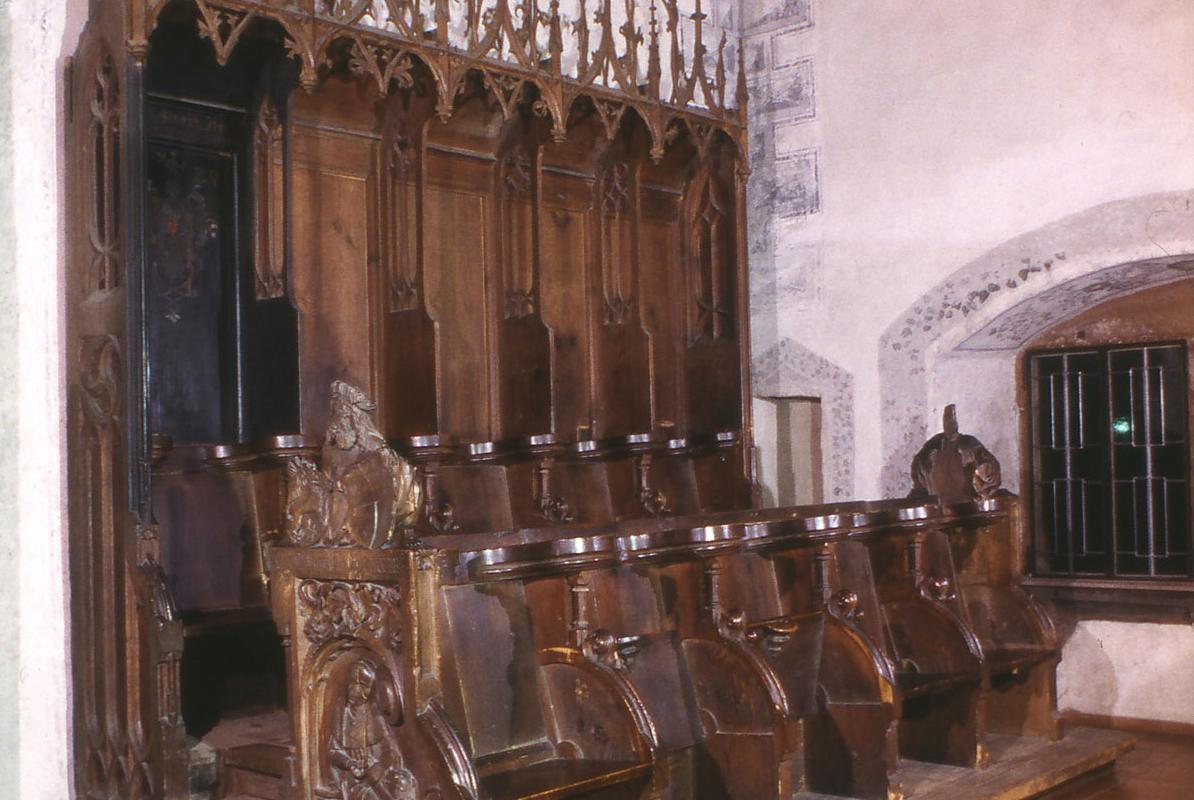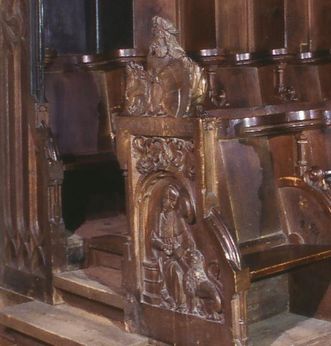ASSEMBLED IN THE CROSSING
The late Gothic choir stalls have only survived in part, which is why their original size cannot be determined with certainty. At one point, they would have had to have accommodated as many monks as resided at the monastery. Earlier, they would have been located in the crossing of the monastery church, near the choir. In the 19th century, they were moved to the south nave, as shown in black and white photographs. Today, they are located on the second story of the south wing of the conclave.




